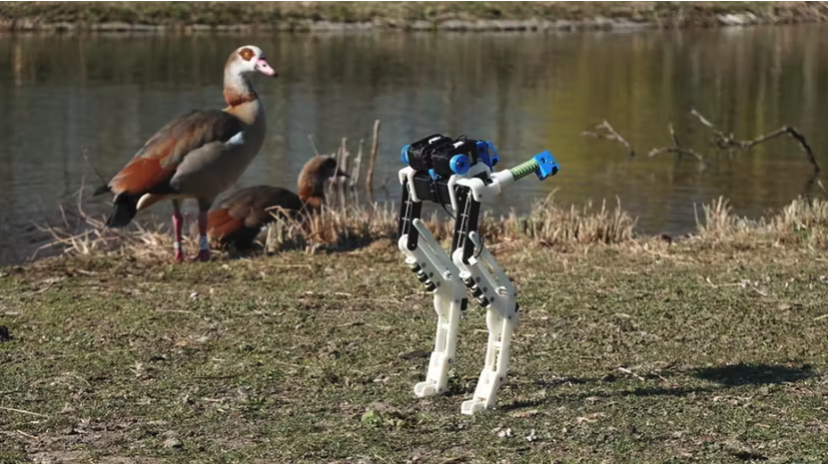
BirdBot Uses Dinosaur, Bird-Inspired Design to Dramatically Improve Legged Robot Efficiency
from hackster.io
A group of roboticists has looked back in time to boost the efficiency of its latest creation, BirdBot — taking inspiration from the commonalities between the leg structure of a modern ostrich and the Tyrannosaurus Rex of 66 million years ago.
Flightless birds, the team at the Max Planck Institute for Intelligent Systems and at the University of California, Irvine, observed, have had millions of years of evolution put into the design of their legs — stretching back to the time of the dinosaurs. If it's latest this long, the researchers surmise, there's probably a reason — and that reason can be applied to robotic legs, too.
The prototype BirdBot doesn't look much like a bird, except in the leg region — and serves as proof of an idea behind what makes bird legs so efficient. "It's not the nervous system, it's not electrical impulses, it's not muscle activity," explains senior author Alexander Badri-Spröwitz. "We hypothesized a new function of the foot-leg coupling through a network of muscles and tendons that extends across multiple joints.
"These multi-joint muscle-tendon coordinate foot folding in the swing phase. In our robot, we have implemented the coupled mechanics in the leg and foot, which enables energy-efficient and robust robot walking. Our results demonstrating this mechanism in a robot lead us to believe that similar efficiency benefits also hold true for birds."
The prototype has no motors in its feet, using a joint equipped with a spring and cable mechanism instead. A mechanical coupling to the rest of the joints connects the leg to two motors, one in the hip and another to flex the knee. "The foot and leg joints don't need actuation in the stance phase," co-author Aghamaleki Sarvestani explains of his team's findings.
"Springs power these joints, and the multi-joint spring-tendon mechanism coordinates joint movements. When the leg is pulled into swing phase, the foot disengages the leg’s spring – or the muscle-tendon spring, as we believe it happens in animals."
The result is a robot design, which draws a quarter of the energy required by its more traditional predecessors — yet remains fast, efficient, and robust. It's also capable of responding to uneven terrain without a processing delay, adjusting itself automatically and mechanically using what co-author Monica Daley describes as the "morphological intelligence" present in birds' legs.
The technology could, its creators theorize, scale up dramatically — potentially delivering meter-high legs carrying robots and payloads weighing several tons, and without needing too much power to drive.
The team's work has been published in the journal Science Robotics under closed-access terms.




Leave a comment